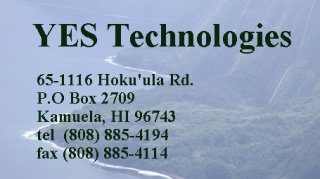
Description:
YES Technologies, in conjunction with the Center for Biofilm Engineering at Montana State University, has developed a method to assess the extent to which native site microorganisms are capable of aerobically biodegrading residual petroleum and other organic compounds in soils.
How It Works:
Soils impacted with organic compounds such as fuel hydrocarbons typically cannot be biologically treated to non-detectable levels within relevant time frames. More common is the development of a non-zero biotreatment endpoint - a level of residual hydrocarbon in soil below which biological processes proceed at a very slow rate, if at all. The level of this biotreatment endpoint is dependent on the soil type (physical and chemical properties), the mixture of compounds impacting the soil, the amount of time the soil has been impacted, and weathering processes. This method calls for the collection of approximately 1 kg of homogeneously impacted soil directly from the field in a zero headspace, vapor-tight container. Time zero samples are removed and quantified for the compounds in question (DRO, GRO, etc.). 40 gr aliquots are then placed in incubation vials and hydrated in a water solution containing adequate oxygen to provide for aerobic conditions throughout the degradation process. An oxygen-containing mixture of magnesium oxide and magnesium peroxide (Oxygen Release Compound®, Regenesis, Inc) is used to provide the necessary oxygen to keep the incubation vials aerobic. This additive releases available oxygen slowly, to prevent possibly toxicity to soil biota. Incubations are performed at 20 C on a shaker table and vials are sampled in triplicate on a semi-monthly basis to determine biodegradation. The aerobic biodegradation endpoint is considered to be the asymptote which develops over 8-12 weeks. Results from the analysis are the aerobic biotreatment endpoint.
Potential Competitive Advantages:
This method is inexpensive and rapid, and requires only impacted soil from the site in question. Regulatory and remediation professionals considering biotreatment/bioremediation for a hydrocarbon impacted site can use this test to determine if biological processes are capable of decreasing residual hydrocarbons to acceptable levels. This method can also be used to determine the point at which existing bioremediation systems or installments should be considered for closure based on the fact that little additional benefit may be available from continued biotreatment. The method provides a relatively fast and inexpensive way to assess the ability of native site biota to degrade residual petroleum or other xenobiotic compounds.
Examples of Applications and Markets:
This method is intended to provide information on the extent of aerobic biodegradation which can be expected under optimal treatment conditions. It is intended for use by consultants, regulators, or individual parties for estimation of the extent to which biological processes can be expected to decrease residual hydrocarbon levels in soils under best-case conditions.
Status:
This method has been developed by YES Technologies and the Center for Biofilm Engineering and will be further tested in 1998.